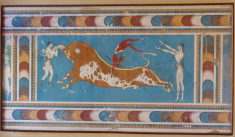Speaker
Description
One of the most long-standing puzzles in nuclear astrophysics is the so-called “Cosmological Lithium Problem”. The standard Big Bang nucleosynthesis theory (BBN) predicts the abundances of the light elements $^{2}$H, $^{3}$He, $^{4}$He and $^{7}$Li produced in the early universe. The primordial abundances of $^{2}$H and $^{4}$He inferred from experimental data are in good agreement with predictions. On the contrary, the theory overestimates the primordial $^{7}$Li abundance by about a factor of three. In an attempt to solve this problem, a possible explanation was an incorrect estimation of the destruction rate from n + $^{7}$Be reactions, being the decay of $^{7}$Be responsible for the production of 95% of primordial Lithium. Data on the $^{7}$Be(n, α) and $^{7}$Be(n, p) reaction channels are scarce or inexistent, thus large uncertainty still affects the abundance of $^{7}$Li predicted by BBN theory. With the aim of obtaining reliable data on the n + $^{7}$Be reactions in a wide neutron energy range, two measurements have been performed at the n_TOF facility at CERN, taking advantage of the new high-flux experimental area (EAR2). New detectors have been specifically developed for these measurements, and new techniques employed for the production of high-purity $^{7}$Be samples. In particular, for the first time a neutron measurement has been performed on a sample produced by implantation of a radioactive beam at ISOLDE. In this talk, the experimental apparatus and sample preparation techniques will be presented, together with recent results on the $^{7}$Be(n, α) and $^{7}$Be(n, p) reactions and their implications on the Cosmological Lithium Problem.
